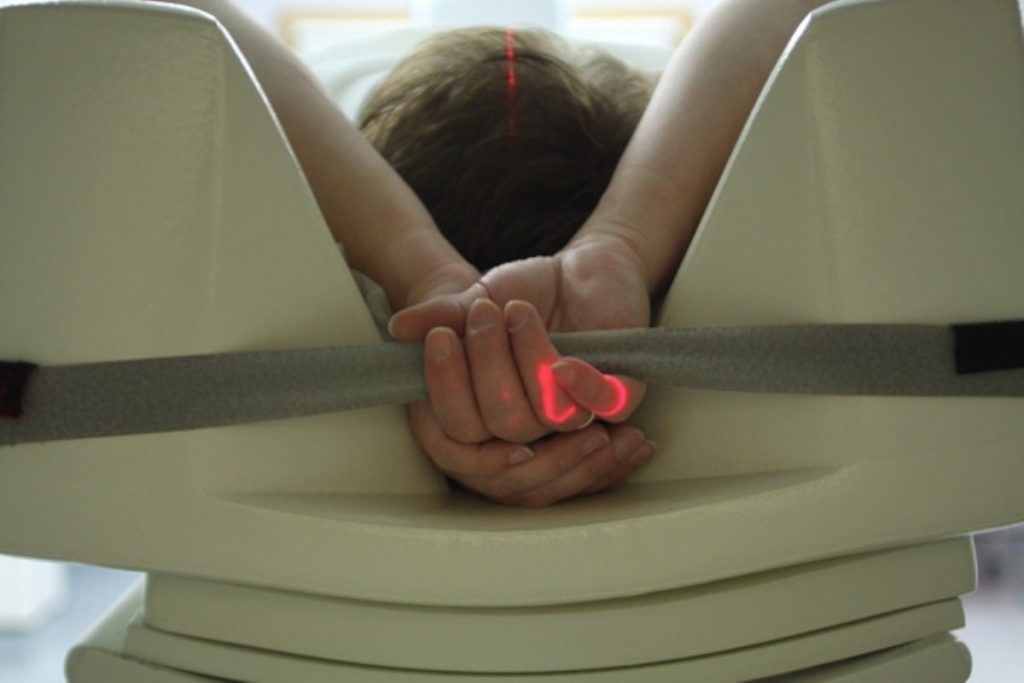Immigrant Stories: The nurse, the detention centre & the women with bruises
An occasional series of Immigrant Stories, shining a light on the people trapped in Britain's immigration system.
"I was working in a local hospital when I saw these women come in with handcuffs on," Susan says.
Susan is not her real name. She talks on condition of anonymity.
"I asked about it. It was clear they'd committed no crime.


"They'd been hunger striking in the corridors of the nearby detention centre. They were grabbed by the guards.
"The nursing notes said they had no injuries and were fine. When I saw them they clearly had wrist bruises which they sustained in Yarl's Wood. There were bruises on their backs as well. They were very distressed."
Susan's experience left her disturbed. Why were women who had committed no crime arriving in handcuffs, bruised, under detention?
A little while later she read a newspaper report about Yarl's Wood. Security personnel were guarding the perimeter fence against a reverend dressed as Santa trying to give gifts to the children locked up inside.
It was a story ripped out of a Dickens novel, perfectly encapsulating the damp, bureaucratic horror of the detention system. Susan decided to get involved. She became an independent medical adviser, visiting the centres, talking with detainees and assessing their treatment.
"Most of the people I see have been tortured," she says, matter-of-factly.
We quickly come to accept those things which we know shouldn't happen. Rule 35 of the Detention Centre Rules bars the Home Office from detaining anyone who has been tortured. It insists that detention centre doctors alert the Home Office of any detainee who they think might be a victim of torture. This is meant to trigger a review of the decision to detain.
It doesn't work. Even towards the end of 2012, just six per cent of Rule 35 reports led to release. The UN Committee Against Torture has branded it an "empty paper-pushing exercise". A joint review by the inspector of prisons and the chief inspector of borders and immigration said the medical reports on torture survivors were "often perfunctory" and "contain no objective assessment". Replies to the reports were "cursory and dismissive".
For those who have suffered torture, being dragged into a detention centre can recreate the horror of the experience.
"A woman I've been seeing recently at Yarl's Wood had been attending mental health appointments in the community before she came in," Susan says. "But as soon as you go into that centre you're in an environment that recreates images for you.
"She'd been raped as part of her torture and she now had a guard coming in every night to check her room.
"She massively deteriorated. She cried the entire time I was there. She was just terrified, looking around constantly. She didn't trust anyone. She threatened to kill herself."
The treatment of rape victims in the asylum system is a constant source of outrage to campaigners.
Rape victims often fail to mention the attack because of the harsh, unsympathetic attitude of UK Border Agency officers and sometimes their own sense of shame. If the rape is brought up later it is written off as false because it was not mentioned from the start.
UKBA offers no childcare service, so women are often forced to describe their rape and torture in front of their children.
"I read a Home Office reply to a woman I saw recently," Susan says.
"They said she had no evidence she was raped, so it was discounted. It was not declared in the original interview but this was a case of a religious woman being interviewed by a man. People don't self-declare because they're embarrassed to talk about it.
"You declare it and they call you a liar and it reinforces that position."
Susan is not exactly welcome at the detention centres.
"There is a massive culture of disbelief," she says.
"The staff at the centres are aggressive and suspicious of me. I'm relieved to leave after two hours."
You can see why they are upset with her presence. Susan's reports reveal that many of the centres' medical procedures are failing at the most fundamental level.
"I saw a man with HIV," she says. "They weren't giving him medication. He was coughing up blood.
"In the NHS, anyone in that condition would be immediately isolated. My recommendation was that he needed his own room at least and to be investigated for TB.
"They said that the detainees 'always make that up'. They said they wouldn't register it unless they saw him coughing up blood themselves."
Susan's assessment of the various centres is nuanced. Some of them are much better than others, she admits. But even the best are inappropriate and inhumane, given the people they are designed to hold.
"I saw a man from Iraq. In this case, the centre was nice. They said they were worried but weren't sure what was wrong," she says.
"He'd seen his entire family killed. When I saw him he was hallucinating. I brought in a translator. He said he saw children's heads everywhere.
"I asked what he wanted. He said he wanted me to chop off his head.
"This man should be in a mental health facility. And we put him in a detention centre."
Susan is still working as an independent medical adviser. This is her immigrant story.









